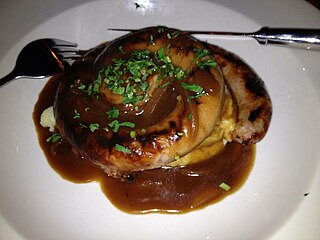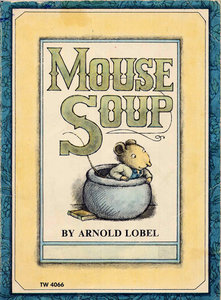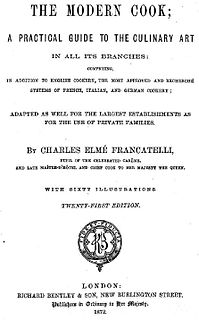Related Research Articles

Cantonese cuisine or more accurately, Guangdong cuisine, also known as Yue cuisine (粵菜) refers to the cuisine of the Guangdong province of China. "Cantonese" specifically refers to only Guangzhou or the language known as Cantonese associated with it, but people generally refer to "Cantonese cuisine" to all the cooking styles of the speakers of Yue Chinese languages from within Guangdong. The Teochew cuisine and Hakka cuisine of Guangdong are considered their own styles, as is neighboring Guangxi's cuisine despite also being considered culturally Cantonese. It is one of the Eight Culinary Traditions of Chinese cuisine. Its prominence outside China is due to the large number of Cantonese emigrants. Chefs trained in Cantonese cuisine are highly sought after throughout China. Until recently, most Chinese restaurants in the West served largely Cantonese dishes.

Bangers and mash, also known as sausages and mash, is a traditional dish of Great Britain comprising sausages served with mashed potatoes. It may consist of one of a variety of flavoured sausages made of pork, lamb, or beef. The dish is sometimes served with onion gravy, fried onions, or peas.

Stone Soup is a European folk story in which hungry strangers convince the people of a town to each share a small amount of their food in order to make a meal that everyone enjoys, and exists as a moral regarding the value of sharing. In varying traditions, the stone has been replaced with other common inedible objects, and therefore the fable is also known as axe soup, button soup, nail soup, and wood soup.

Hungarian or Magyar cuisine is the cuisine characteristic of the nation of Hungary and its primary ethnic group, the Magyars. Traditional Hungarian dishes are primarily based on meats, seasonal vegetables, fruits, fresh bread, dairy products and cheeses.

Tableware are the dishes or dishware used for setting a table, serving food and dining. It includes cutlery, glassware, serving dishes and other useful items for practical as well as decorative purposes. The quality, nature, variety and number of objects varies according to culture, religion, number of diners, cuisine and occasion. For example, Middle Eastern, Indian or Polynesian food culture and cuisine sometimes limits tableware to serving dishes, using bread or leaves as individual plates. Special occasions are usually reflected in higher quality tableware.

Swanson is a brand of TV dinners, broths, and canned poultry made for the North American market. The TV dinner business is currently owned by Pinnacle Foods, while the broth business is currently owned by the Campbell Soup Company. Current TV dinner products sold under the brand include Swanson's Classics TV dinners and pot pies, and the current broth lineup includes chicken broth and beef broth.

Prawn cocktail, also known as shrimp cocktail, is a seafood dish consisting of shelled, cooked prawns in a cocktail sauce, served in a glass. It was the most popular hors d'œuvre in Great Britain, as well as in the United States, from the 1960s to the late 1980s. According to the English food writer Nigel Slater, the prawn cocktail "has spent most of see-sawing from the height of fashion to the laughably passé" and is now often served with a degree of irony.
Pepper Pot is a thick stew of beef tripe, vegetables, pepper and other seasonings. The origins of the stew are steeped in legend, with one story attributing the dish to Christopher Ludwick, baker general of the Continental Army during the American Revolutionary War. According to this story, during the harsh winter of 1777–1778 farmers near Valley Forge sold food to the British rather than accepting the weak continental currency. The Continental Army survived on soup made of tripe, vegetables, and whatever else they could find.
The historical form of service à la russe is a manner of dining that involves courses being brought to the table sequentially, and the food being portioned on the plate by servants before being given to the diner. It became the norm in very formal dining in the Western world over the 19th century. It contrasts with the older service à la française in which all the food is brought out simultaneously, in an impressive display of tureens and serving dishes, and the diners put it on their plates themselves.
Sara's Secrets was a Food Network show hosted by Sara Moulton who was the executive chef of Gourmet magazine. 'Sara’s Secrets air from 2002 until 2007. Sara's Secrets offers the viewer recipes and techniques specifically focused to fit the viewer's busy lifestyle.

Honduran cuisine is a fusion of indigenous (Lenca), Spanish, Caribbean and African cuisines. There are also dishes from the Garifuna people. Coconut and coconut milk are featured in both sweet and savory dishes. Regional specialties include fried fish, tamales, carne asada and baleadas. Other popular dishes include meat roasted with chismol and carne asada, chicken with rice and corn, and fried fish with pickled onions and jalapeños. In the coastal areas and the Bay Islands, seafood and some meats are prepared in many ways, including with coconut milk.

Mouse Soup is a 1977 picture book by noted illustrator Arnold Lobel. Beginning with the simple sentence "A mouse sat under a tree", the book goes on to tell the story of a mouse who has to trick Weasel from turning Mouse into Mouse Soup. He does that by telling stories about Bees and the Mud, Two Large Stones, The Crickets, and The Thorn Bush, and tells Weasel to put them into his soup. It is then assumed that Mouse got away and Weasel got stung by bees.
Cathy Hartman Mitchell is an American author and television infomercial host for numerous "As seen on TV" products. Cathy is also the author of Dump Cakes, Dump Dinners and Crock Pot Dump Meals, all of which were advertised on the Steve Harvey Show and on HSN. Her newest cookbooks include Ramen Joy and Ramen Nibbles, which are homemade dishes and desserts made with instant ramen noodles.
Simon Charles Hopkinson is an English food writer, critic and former chef. He published his first cookbook, Roast Chicken and Other Stories, in 1994.

Prawn cocktail, steak garni with chips, and Black Forest gâteau was, according to a survey by trade magazine Caterer and Hotelkeeper, the most popular dinner menu in British restaurants in the 1980s. It was especially associated with the Berni Inn chain which popularised mass-market dining out after the end of food rationing in Britain, following the Second World War. The Prawn Cocktail Years, by Simon Hopkinson and Lindsey Bareham, called this meal the Great British Meal Out.
Sue Miles was an Anglo-American counter-culture activist and restaurateur. With her husband Barry and the support of celebrities such as Paul McCartney, she started the Indica Gallery and the underground newspaper International Times (IT). She started her cooking career by running the cafe at the Arts Lab and then worked at other prominent restaurants in central London such as Food for Thought and L'Escargot.

Hot pot, or hotpot, also known as steamboat, is a Chinese cooking method, prepared with a simmering pot of soup stock at the dining table, containing a variety of East Asian foodstuffs and ingredients.

A stew is a combination of solid food ingredients that have been cooked in liquid and served in the resultant gravy. Ingredients in a stew can include any combination of vegetables and may include meat, especially tougher meats suitable for slow-cooking, such as beef. Poultry, sausages, and seafood are also used. While water can be used as the stew-cooking liquid, stock is also common. Seasoning and flavourings may also be added. Stews are typically cooked at a relatively low temperature, allowing flavours to mingle.

Pea soup or split pea soup is soup made typically from dried peas, such as the split pea. It is, with variations, a part of the cuisine of many cultures. It is most often greyish-green or yellow in color depending on the regional variety of peas used; all are cultivars of Pisum sativum.

The Modern Cook was the first cookery book by the Anglo-Italian cook Charles Elmé Francatelli (1805–1876). It was first published in 1846. It was popular for half a century in the Victorian era, running through 29 London editions by 1896. It was also published in America.
References
- 1 2 "Lindsey Bareham". Quadrille. Retrieved 12 June 2014.